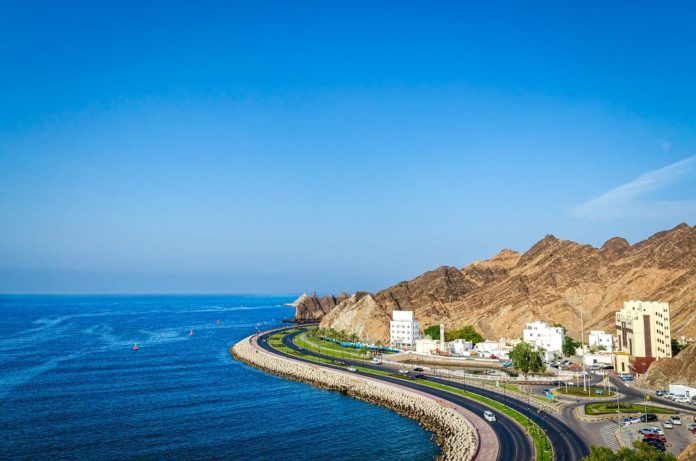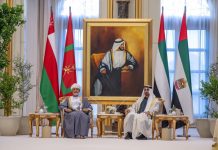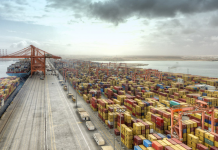Amidst tight financial conditions and growing trade tensions, the world economic activities witnessed some moderation since the second half of 2018. However, the economic activities in the Sultanate, backed by a surge in oil prices and expansion in the non-hydrocarbon sector gained further momentum in 2018.
Although financial conditions eased somewhat in 2019 with a pause in the interest rate hike by the Federal Reserve and a return to more accommodative monetary policy stance by other major central banks, a resolution to the trade tensions continues to be elusive. Fears of the global slowdown and persisting trade tensions continue to be a major source of volatility for oil prices that have seen large swings since late 2018.
Read also: OPEC+ Watchers See Extension of Deal But No Deeper Output Cuts
Opec+ countries entered into another agreement to cut production until June 2019, which has now been extended until the first quarter of 2020, to restore oil prices and reduce volatility. The trajectory of oil prices coupled with policy efforts to improve the business environment and foster private sector-led growth would condition the economic prospects of Oman during 2019.
Read more:
-
Oman Economy Expected to Grow 3 percent: S&P
-
Oman Economy on a Growth Trajectory
-
Natural gas key catalyst to fuelling Oman’s economy
Omani Crude
In the setting of moderating global growth, tightening financial conditions and decelerating world trade volume, it is notable that Omani economy gained further impetus. The Omani crude oil price averaged at $69.7 a barrel in 2018 as compared to $ 51.3 per barrel during 2017. The recovery in oil prices also contributed to growth in non-oil economic activities, reflecting inter-linkages, although the dependency of non-oil activities on oil activities has somewhat weakened in the last few years.
Oil & Non-Oil GDP
The nominal Gross Domestic Product (GDP) recorded a growth of 12.0 percent in 2018, higher as compared to 7.3 percent in 2017. The petroleum and non-petroleum sectors grew in nominal terms by 37.1 percent and 2.9 percent, respectively, in 2018.
As non-petroleum activities witnessed some deceleration in growth, the petroleum sector was the main driver of an accelerated growth in the Omani economy during 2018.
Notably, with Khazzan phase-I becoming operational, the natural gas under the petroleum sector is also emerging as a significant contributor to the Omani economy.
Read also: Biggest LNG producer targets 64% jump in capacity by 2027
Notwithstanding some deceleration in growth across several non-petroleum activities, the non-petroleum sector is gradually evolving as the key force for ensuring sustainable growth in the Sultanate.
The dedicated programs under the diversification plan “Tanfeedh” along with other initiatives to improve the business environment are yielding encouraging results and fostering traction in the non-hydrocarbon sector.
The Ninth and final 5-year Development Plan under Vision 2020 continues to emphasise more diversified economic activities to insulate the economy from external shocks. The government also undertook some important policy measures during 2018, viz. establishment of a commercial arbitration center, the adoption of a new commercial companies’ law, and a further streamlining of licensing processes through Invest Easy in order to improve the business and investment climate and promote private sector-led growth in the Sultanate.
Read also: Reforms to bolster private sector growth in Oman: CBO’s Amri
Inflation
With regard to the inflationary situation, the headline inflation eased to 0.9 percent during 2018 from 1.6 percent in 2017. Although imported inflation remains the major determinant of inflation, domestic factors also played a role in affecting inflationary conditions in the Sultanate.
Headline Inflation in Oman during 2018 followed a contrary trend to global inflation as consumer inflation in both AEs and EMDEs is estimated to have increased. The subdued rise in non-fuel international commodity prices, appreciation in $ exchange rate, and muted domestic demand led to benign inflation in the Sultanate.
Oman’s Fiscal Deficit
On the fiscal front, the surge in oil prices provided required support to government revenues, while fiscal measures that were undertaken last year also continued to support the growth of non-oil revenue of the government. However, at the same time, government expenditure also increased noticeably in 2018 due to higher spending on oil & gas production, defence, subsidies and elevated interest payments.
The buoyant government revenues, however, led to a decline in overall fiscal deficit by about 30 percent to RO 2,649 million during 2018. In terms of budget outcome, the actual fiscal deficit overperformed the budget estimate by 11.7 percent, with much higher overshooting in the government revenue vis-à- vis the government expenditure.
The estimated fiscal deficit of RO 2,800 million in the 2019 budget assumes an average oil price at $ 58 per barrel. The government debt also increased to RO 14,492 million in 2018 (a jump of about 30 percent) – the debt to GDP ratio increased to 47.5 percent.
The burgeoning government debt level not only constraints the fiscal space but also raises sustainability concerns.
Monetary Conditions
Turning to monetary conditions, the Federal Reserve raised the policy rate four times during 2018, each by 25 basis points, which were automatically transmitted to Omani monetary conditions due to the currency peg arrangement. Consequently, interest rates on both deposits and lending increased in Oman.
Nonetheless, both credit and deposits maintained reasonable growth of 6.4 percent and 7.8 percent, respectively during the year, consistent with expanding nonoil economic activities.
The broad money supply expanded by 8.3 percent– the quasi money expanded by 12.1 percent while narrow money (M1) declined marginally by 0.2 percent. Although local currency deposits also increased, a steep jump in quasi-money during 2018 was attributed mainly to a large increase in foreign currency deposits.
As the monetary base shrank, the money multiplier improved to 5.7 in 2018 from 5.0 during the previous year.
With regard to the health of banking sector and quality of assets, the position remained resilient and strong, despite early signs of some vulnerability on the back of slowing real sector.
The CBO continued with the gradual implementation of Basel III norms including capital conservation buffer to strengthen the banking sector.
Consequently, the banks remained adequately capitalized as their Capital Adequacy Ratio (CAR) stood at 17.9 percent by the end of December 2018, significantly higher than mandated by CBO at 12.875 percent. The banks in the GCC region generally maintain sufficiently higher CAR to deal with ramifications of volatile oil prices.
The quality of loans did not deteriorate much as the gross nonperforming loans (NPLs) of conventional banks stood at 2.7 percent in December 2018 (net NPLs stood at 0.9 percent).
The financial markets functioned smoothly during the year, albeit sluggish activities in some segments. The short term interest rates in the money market remained aligned and some improvement was noticed in the volume of domestic inter-bank call money market partly reflecting easing of regulation pertaining to lending ratio. The activities in equity markets were subdued and the Muscat Securities Market Index (MSM-30) closed lower by about 15 percent at the end of 2018.
The liquidity in both equity and bonds segments of the capital market also dropped during 2018. As the surge in oil prices improved foreign currency liquidity, the foreign exchange market functioned without any pressure during 2018.
Oman’s external account also witnessed a significant improvement during 2018 backed by a steep recovery in oil prices, buoyant non-oil exports, and decline in merchandise imports. The current account deficit (CAD) narrowed to RO 1,671 million during 2018 from RO 4,222 million in 2017.
The net financial & capital inflows were higher than CAD, resulting in an overall balance of payments surplus. Consequently, total net foreign assets (CBO and SGRF together) increased by RO 990 million, alleviating pressure on the adequacy of external buffers.
Imports cover of CBO’s net foreign assets increased to 7.4 months from 6.3 months a year ago.






